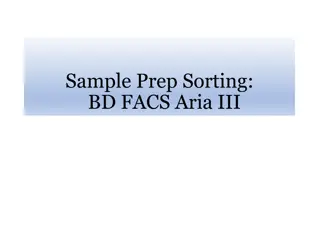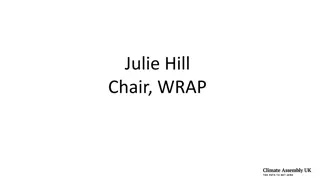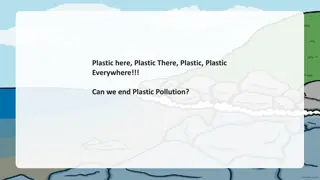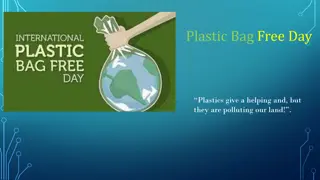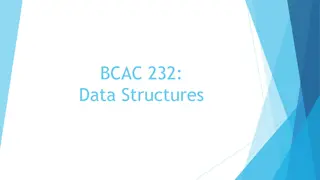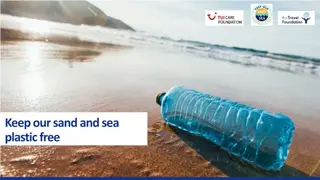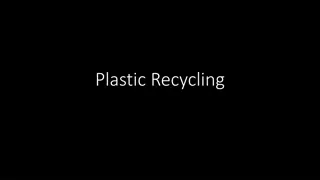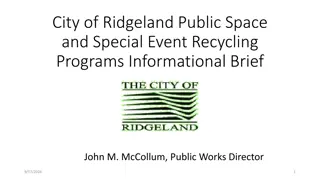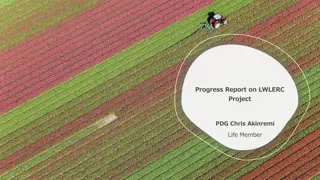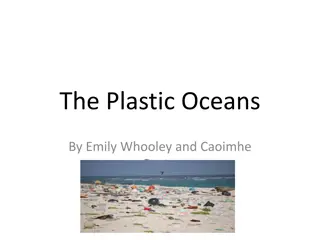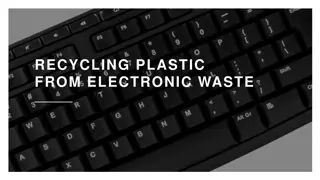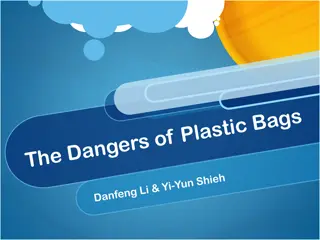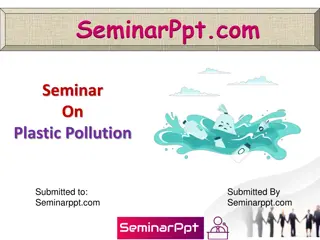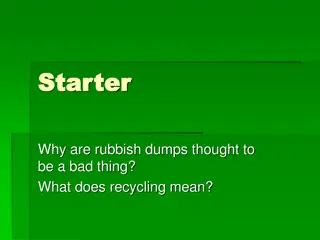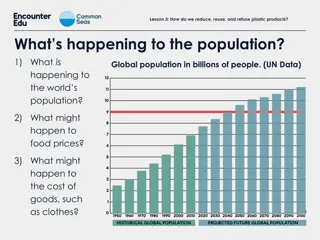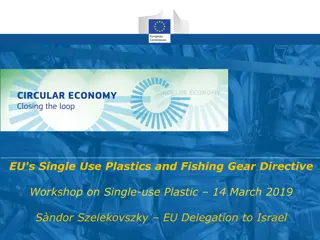Understanding Plastic Types: Sorting and Recycling Methods
Explore the process of sorting plastics based on their types using methods like floatation, identification by recycling numbers, and bending tests. Learn how to determine the plastic type through engaging experiments and educational resources. Discover ways to contribute to reducing plastic waste through proper sorting and recycling practices.
Download Presentation

Please find below an Image/Link to download the presentation.
The content on the website is provided AS IS for your information and personal use only. It may not be sold, licensed, or shared on other websites without obtaining consent from the author. Download presentation by click this link. If you encounter any issues during the download, it is possible that the publisher has removed the file from their server.
E N D
Presentation Transcript
What do we do with Plastics? Watch Plastics in Ireland https://youtu.be/E-pmxaiZ-NM What do you think of this? How do you feel when you see all that rubbish? What can we do about it? We bundle all our recycling together but it needs to be sorted. How can we sort it?
All plastics are not the same You can tell the type of plastic by the recycling number But what if you can t find a recycling number? Or what if they are all mixed together? How might you sort plastic? Write your ideas down on your worksheet
Sorting Plastics I think I could tell plastic apart by Video: Record the 6 methods to determine type of plastics 1. 2. 3. 4. 5. 6. Watch Precious Plastic - learn about plastic https://youtu.be/fsqLJNyrVss We bundle all our recycling together but it needs to be sorted. How can we sort it?
Floatation A major way of sorting plastic is to see if it can sink or float. This process is called floatation and is used on a large-scale We know some things float and some things sink Different plastics can float and sink in different kinds of liquid
How does floatation work? Different liquids can have different densities (or thickness). Think of syrup and water; something might sink in water but float in syrup. You will put your unknown plastic in different liquids and see if they float or sink. The liquids are: Tap water, vegetable oil, glycerine, alcohol and water mix: (the mix is 3/5 alcohol and 2/5 water or a for every three parts alcohol there is 2 parts water.)
What type of plastic do you have? Each team will be given 5 small pieces of plastic they are all the same Place one piece of plastic in each liquid Push it down below the surface and then watch Wait until it stops moving and circle the right response: did it float or did it sink? Do this for each liquid (there are four cups) Record on your worksheet Take the last piece and bend it in half, Does it make a white line where you bent it? Record your observations
Determining your plastic Once you have filled out your worksheet compare it to the chart to see what plastic you have. To tell between PVC and PET, fold the sample in half if it turns white at the fold it it PVC, if it doesn t it is PET. Once you know your plastic, take an information sheet. The Plastic floats Water Alcohol and Water Vegetable Glycerine Colour of fold when bent No No No No No Change Yes No No Yes No No No No White Yes Yes No Yes Yes Yes Yes Yes No No N Yes
What did we do and what did we learn? How did we work as scientists today? Did we Ask Questions Observes Thinks / Predicts Tests Records We can sort plastics using the properties of floating and sinking. Floatation is a common way of sorting material





